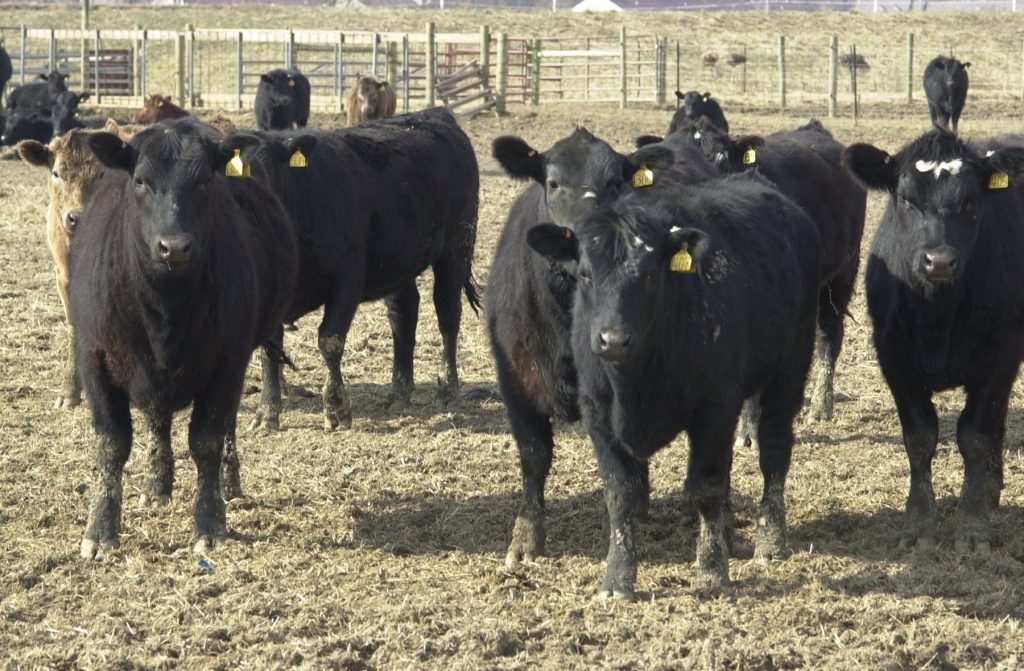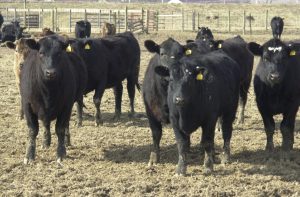Beef School to help producers maintain an edge

The 2017 Beef School will be offered at 25 locations through a live internet feed on three Tuesday evenings between Jan. 17 and Feb. 28. Photo from CFAES.

COLUMBUS, Ohio – Beef producers can go back to school for three evenings in January and February to learn the latest on cow-calf, backgrounding/stocker and feedlot production during the 2017 Ohio Beef Cattle School, beginning Jan. 17.
“The primary mission of this program is to demonstrate how the relationships between these three sectors must work together to produce high-quality beef for today’s consumer,” said John Grimes, beef coordinator for Ohio State University Extension and organizer of the school.
The school will be broadcast at 24 locations across Ohio, hosted by county OSU Extension educators, as well as at one site in West Virginia. In the past, about 200 people have participated across the locations each evening, Grimes said.
“I think we have had good attendance over the years because the OSU Extension Beef Team has worked hard to select timely topics that are resourced by a good combination of Ohio State faculty and educators, as well as nationally prominent speakers from academia and the beef industry,” Grimes said. OSU Extension is the outreach arm of The Ohio State University’s College of Food, Agricultural, and Environmental Sciences.
The sessions begin at 7 p.m. on Jan. 17, Feb. 7 and Feb. 28. Local hosts determine whether preregistration or a fee is required.
“We always encourage folks to contact the local hosts to be sure,” Grimes said.
A list of the host locations and contact information is available at go.osu.edu/BeefSchool.
The sessions will cover:
The cow-calf sector on Jan. 17. Featured will be Justin Rhinehart, associate professor and Extension beef cattle specialist with the University of Tennessee Department of Animal Science, who will focus on key management practices that will help the cow-calf producer stay viable in the beef cattle business. His presentation will include how genetics and nutrition are key components of reproduction management to keep females productive. Also, Amy Radunz, associate professor of beef cattle production at University of Wisconsin – River Falls, will discuss how producers can achieve the genetic potential of their calf crop, starting at conception. She will cover how nutrition and management during gestation could impact the lifetime development of the resulting calf, Grimes said.
Grazing versus confinement growing systems for feeder cattle on Feb. 7. This session will feature Francis Fluharty, research professor with Ohio State’s Department of Animal Sciences and the Ohio Agricultural Research and Development Center, the research arm of the college. Fluharty will evaluate the advantages and disadvantages of these two distinctly different management systems, Grimes said.
Feedlot production on Feb. 28. This session will feature Justin Sexten, supply development director for Certified Angus Beef, who will discuss “Meeting consumer demand: Perspective from the feed yard to the consumer.” Sexten will challenge participants to consider how feeder, packer, grocer and restaurateur demands influence their cow-calf operation, whether an end-user focused cow herd works on the farm, and what opportunities exist to capture value-added processes.
More information about the 2017 Beef School is available online at go.osu.edu/BeefSchool. Or, anyone with additional questions may contact the local host or Grimes at 1864 Shyville Road, Piketon, OH 45661, 740-289-2071, ext. 242, or [email protected].
Ohio currently ranks 29th in beef cow production in the U.S., with 284,000 head, according to the National Agricultural Statistics Service.






